GENERAL APPEARANCE
The Maremma and Abruzzes shepherd dog is a big dog, strongly built of a rustic appearance, at the same time majestic is typical. On the whole his shape, of average proportions, is that of a heavy dog, whose body is longer than the height at the withers; is balanced as much in size (heterometry = normal proportions between the size and different parts of the body) as to the profiles (alloidism = concordance between the profiles of the head and the body).
This paragraph of the Standard is unequivocally clear and is of fundamental importance in the judgment of the dog. It shows us in fact what must be the overall impression that the dog, both male and female, must give us. If the dog has not this imprint or if it differs a lot, then we are in the presence of a dog which is not perfectly in type and that will hardly be able to sustain the hardness of the work on the pastures without suffering. As if to say: if its general conformation does not meet the requirements of the right constitution, the dog cannot be of value.
The adjectives used by the Standard are big, strong and rustic which show us a dog able to face the grueling work in the difficult environment where he lives. The Maremma and Abruzzes sheepdog must be a dog of great size, which means that the height at the withers should be preferred towards the maximum limit instead of the minimum limit established by the Standard, and the body must have strong bone, developed and toned musculature, as well as very advantageous transversal diameters. None of the parts of the body must be disharmonious respectively to the rest of the body and each anatomical region is required well proportioned to each other in order to give the whole a clear feeling of general harmony. Examples of disharmony related to the format are: short head compared to the height at the withers or head lacking in volume respectively to the body; rear development not proportionate to the front, thin neck compared to the body or short neck compared to the height at the withers; chest too tight or a forearm too short compared to the height at the withers.
The evaluation of the harmony of the format, in short, is set by the Standard at the basis of the criteria of judgment. Even before going into the analysis of each value and fault, the Judge must be able to recognize if a Maremma and Abruzzes Sheepdog belongs or not to the constitutional type of the breed.
The definition of “heavy dog” corresponds in the Italian Standard to the more specific definition of “heavy mesomorph” definition that appears since the first draft of the 1924 standard. The description of “heavy mesomorph” completes and confirms the big picture which is just described.
We must not forget that the general appearance, synonym of morphological type or constitutional type, is the direct phenotypic consequence of the dog’s own endocrine activity. Each puppy is already born with a well-defined biotype that establishes diameters, body masses and volume. In short, for a precise biological process, each Maremma and Abruzzes Sheepdog that has the typical general appearance envisaged by the Standard was born with the right biotype that allowed it, in its growth, to develop the typical general conformation of the breed. I am talking about the constitutional type on which you cannot intervene with workouts on treadmill or with special diets because it depends on the endocrine constellation of the animal.
The dog’s endocrine glands (thyroid, pituitary, pancreas, etc.) secrete hormones of different types that interact with each other in different proportions. It is the so-called hormonal metabolism, which is different for every constitutional type because there is a close relationship between the external anatomical forms and the hormonal physiological functions.
The prevalence of anabolic metabolism determines the brachimorph type that is characterized by the increased development of the abdominal cavity, short limbs, very developed transversal diameters, thick and abundant skin, as well as -very important aspect- hyporeactive, lazy and slow temperament. Think of the Neapolitan Mastiff.
The prevalence of catabolic metabolism, on the other hand, determines the dolichomorphic type that is characterized by the increased development of the thoracic cavity, long limbs, undeveloped transverse diameters, thin and pulled skin, as well as hyper-reactive, running and quick temperament. Think of the Greyhound.
The perfect balance of the two types of metabolism, instead, determines the mesomorph type, characterized by the balanced development of the thorax and abdomen, limbs neither long nor short, medium-developed transversal diameters, medium-thick and not abundant skin, as well as an average reactive temperament without being weak or particularly dynamic.
Therefore, it is vitally important in Zootechnics to dequalify the animal that deviates from the morphological type of its breed.
Having said that, we are going to try to better define the morphological type of the Maremma and Abruzzes Sheepdog in constitutional terms.
Its phenotypic habitus must surely be that of a mesomorph, therefore harmonious in the proportions of all its formats, without excess in lengths and heights, and with a medium reactive character. But the mesomorph, as well as the other two constitutional types, has a gap within which different corporal indices and different thoracic indices fall. Mesomorphs are the Riesenschnauzer, the Pointer, the Boxer, the Belgian Sheepdog, breeds that, although having different corporal, and thoracic indices, are all placed within the unique definition of mesomorphy. The Maremma and Abruzzes Sheepdog in the Italian version of the Standard is rightly defined heavy mesomorph that means that its location is closer to the brachimorphic conformation and not to the dolichomorphic conformation.
Given the choice, therefore, it is undoubted that a slightly heavier constitution should be forgiven, or evaluated with more benevolence than the more serious drift towards the long-limbed type.

